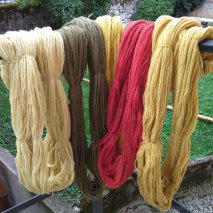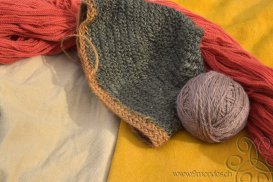
Les 9 Mondes
History and Fantasy Crafts
Legal terms | Privacy

TINCTORIAL PLANTS
As a sign of social status or a personality statement, colors in clothing have been used since time immemorial. The textile fiber is washed and mordanted, then dyed in a vat made by soaking various parts of plants called tinctorial for their colouring properties.
Chemical dyes, nowadays, have largely replaced natural ones, but these plants are still around for everyone who wants to try their hand and explore the fascinating world of natural colours.
From our shop
These tinctorial plants are grown in our garden in Switzerland.

